Abstract
The widespread use of standard leucotomy terminated in the early 1950's with the advent of the phenothiazine group of drugs. But since then, psychosurgical techniques have been considerably refined and the indications for the newer operations are becoming increasingly precise. Knight's (1969) stereotactic tractotomy is probably the most frequently performed contemporary operation for the relief of some psychiatric illnesses, and the number of patients now referred for this treatment have justified the organization of a specific unit for the purpose.
The value of such a special unit, involving close co-operation between neurosurgeon and psychiatrist is emphasized. It provides a supportive environment for patients who are sharing a highly specialized treatment, and offers opportunities for studying outcome after operation with resulting improvement in selection. It also facilitates research possibilities in general. The clinical work of the Geoffrey Knight Psychosurgical Unit, probably in its way unique, is described and questions often encountered from doctors and from patients are considered. The importance of rehabilitation after operation is stressed and some aspects of the longer term post-operative psychiatric care involved are dealt with.
Full text
PDF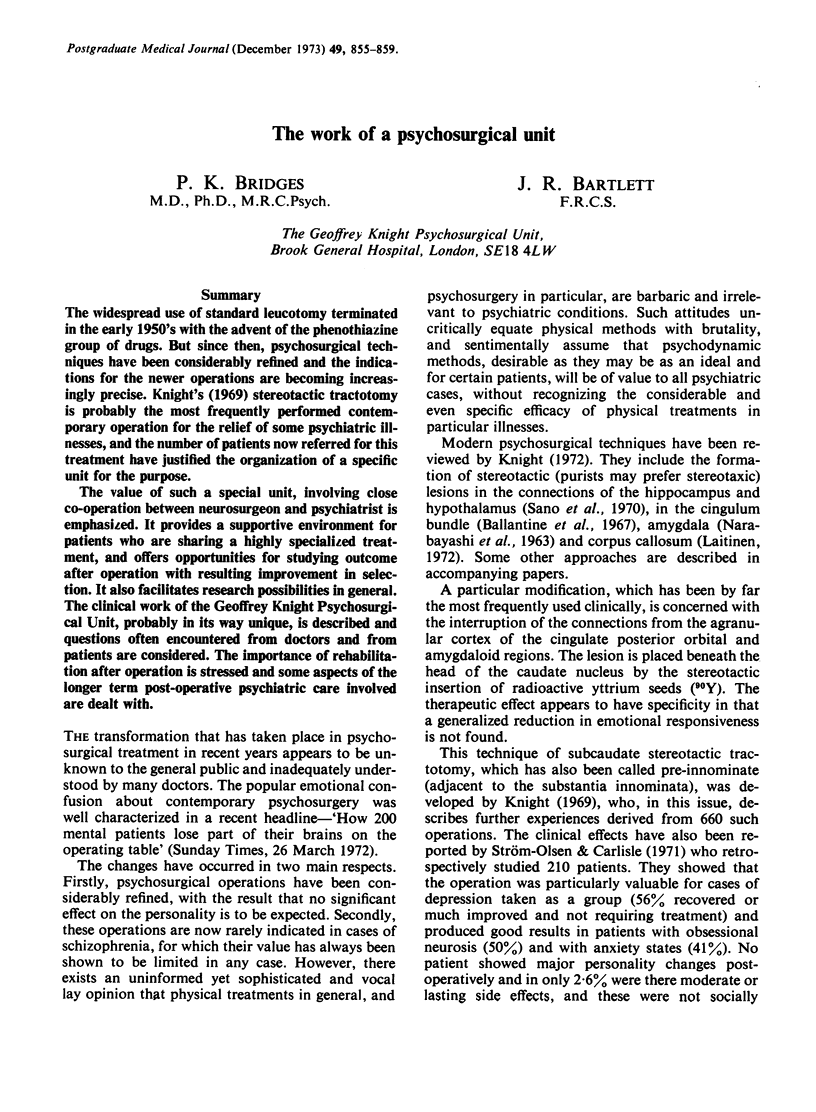
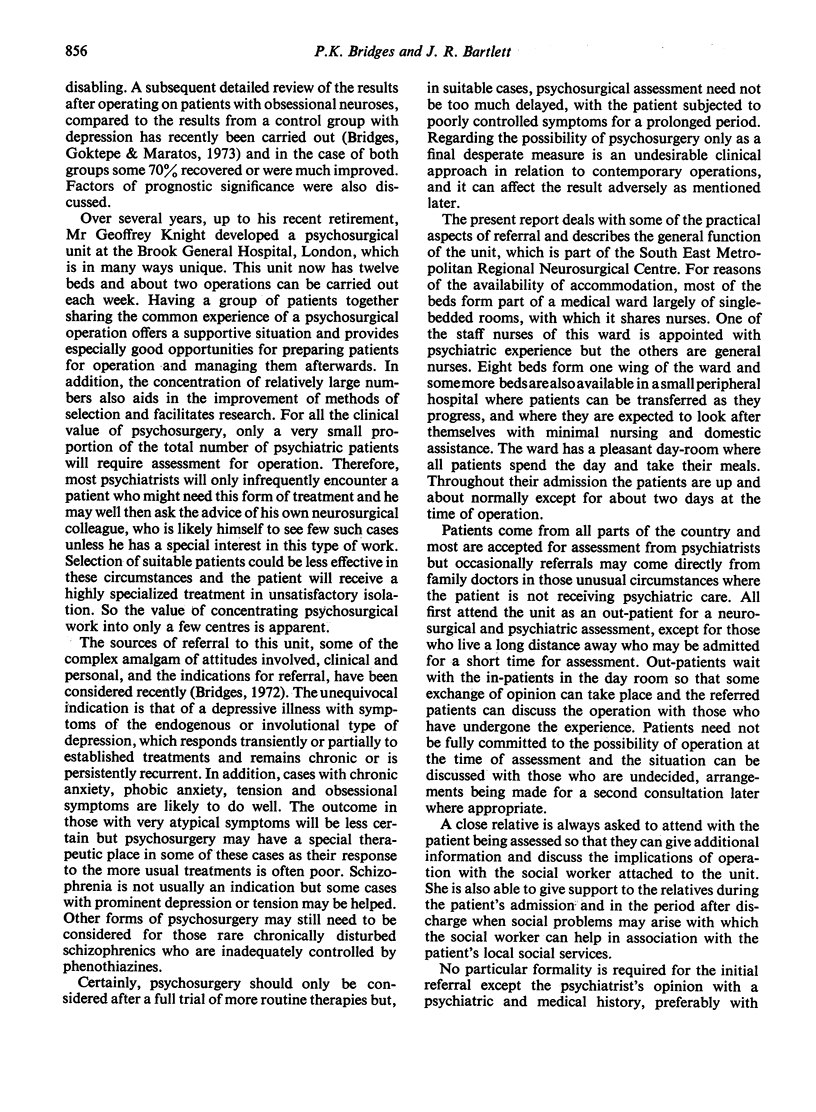
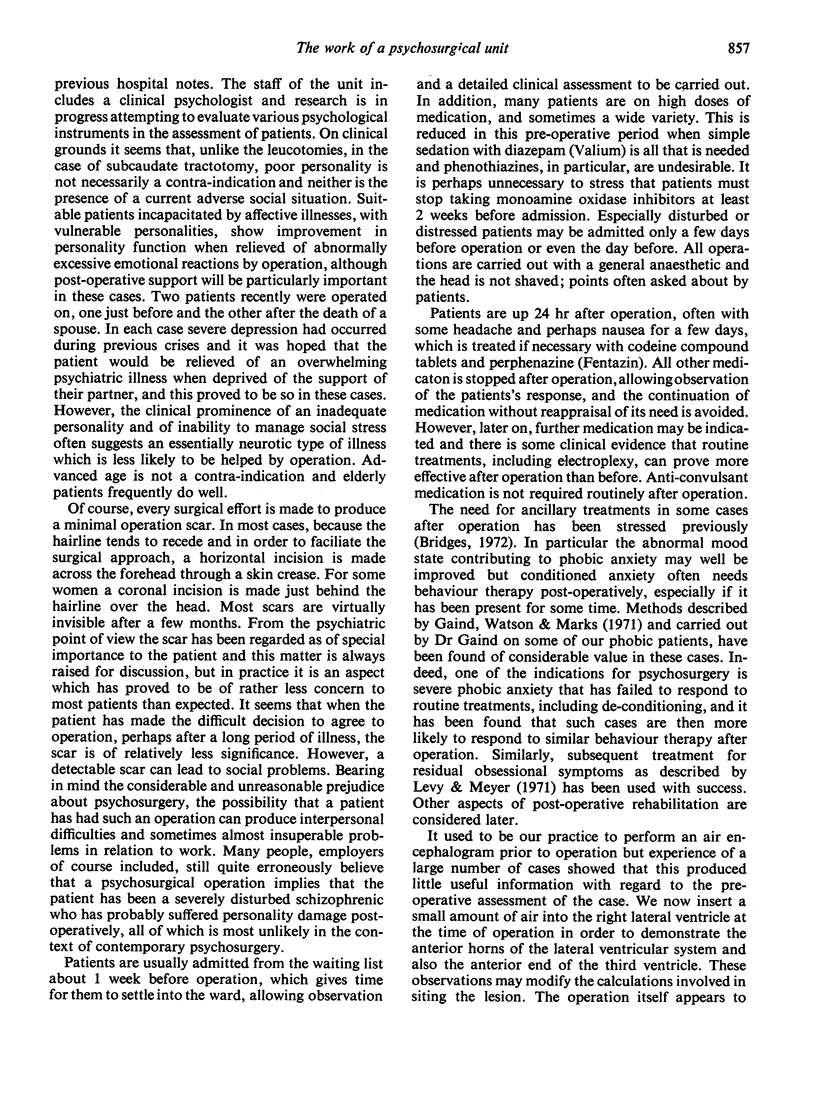
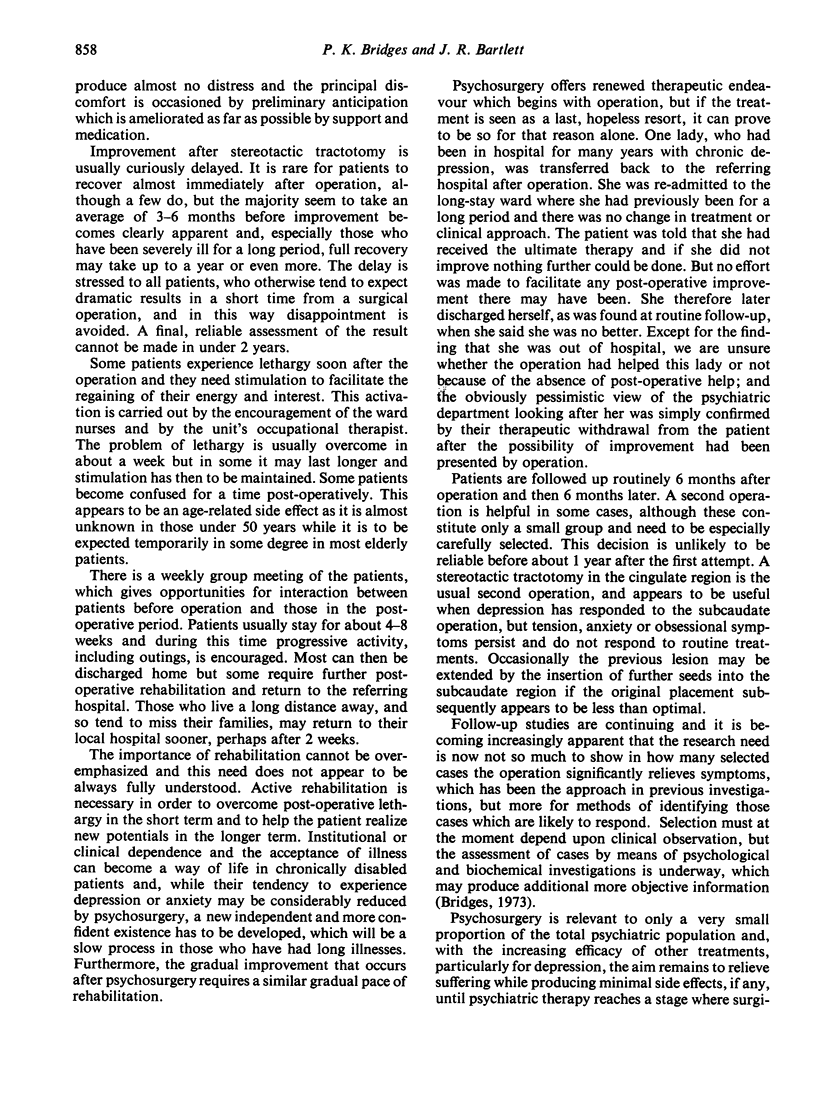
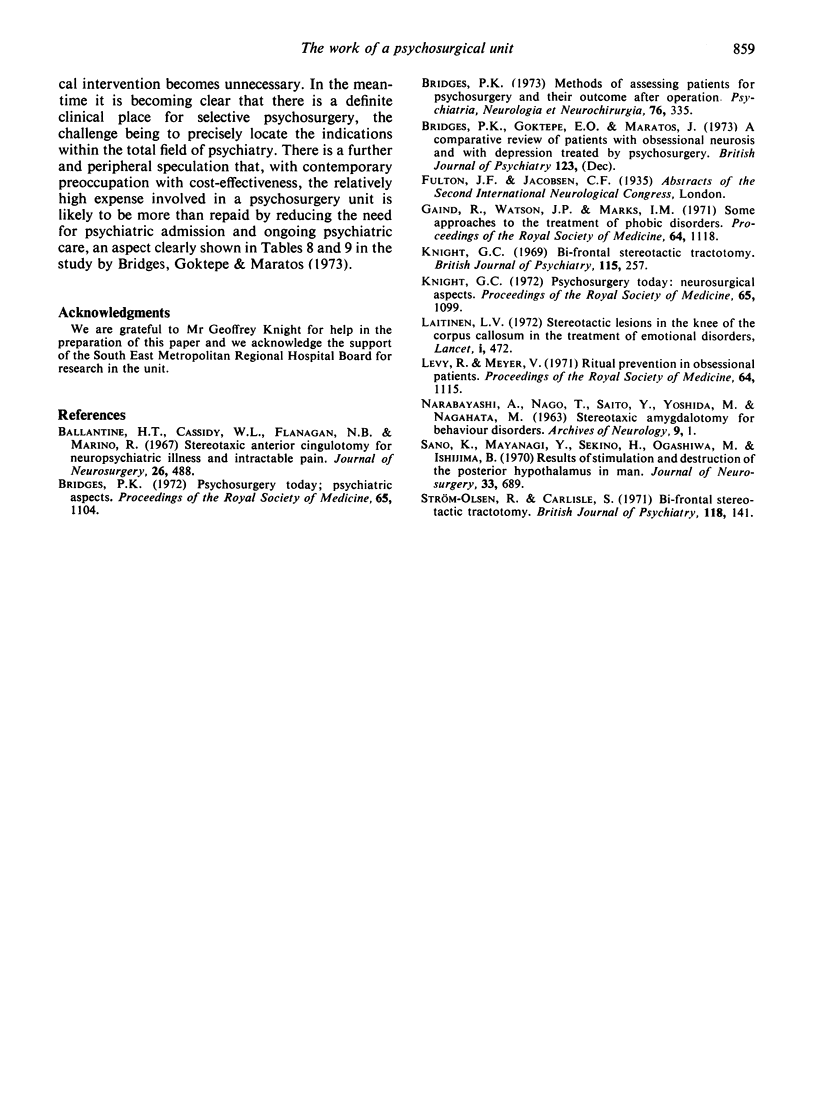
Selected References
These references are in PubMed. This may not be the complete list of references from this article.
- Ballantine H. T., Jr, Cassidy W. L., Flanagan N. B., Marino R., Jr Stereotaxic anterior cingulotomy for neuropsychiatric illness and intractable pain. J Neurosurg. 1967 May;26(5):488–495. doi: 10.3171/jns.1967.26.5.0488. [DOI] [PubMed] [Google Scholar]
- Bridges P. K. Methods of assessing patients for psychosurgery and their outcome after operation. Psychiatr Neurol Neurochir. 1973 Sep-Oct;76(5):335–344. [PubMed] [Google Scholar]
- Bridges P. K. Psychosurgery today: psychiatric aspects. Proc R Soc Med. 1972 Dec;65(12):1104–1108. [PMC free article] [PubMed] [Google Scholar]
- Gaind R., Watson J. P., Marks I. M. Some approaches to the treatment of phobic disorders. Proc R Soc Med. 1971 Nov;64(11):1118–1120. [PMC free article] [PubMed] [Google Scholar]
- Knight G. C. Bi-frontal stereotactic tractotomy: an atraumatic operation of value in the treatment of intractable psychoneurosis. Br J Psychiatry. 1969 Mar;115(520):257–266. doi: 10.1192/bjp.115.520.257. [DOI] [PubMed] [Google Scholar]
- Knight G. Neurosurgical aspects of psychosurgery. Proc R Soc Med. 1972 Dec;65(12):1099–1104. [PMC free article] [PubMed] [Google Scholar]
- Laitinen L. V. Stereotactic lesions in the knee of the corpus callosum in the treatment of emotional disorders. Lancet. 1972 Feb 26;1(7748):472–475. doi: 10.1016/s0140-6736(72)90124-9. [DOI] [PubMed] [Google Scholar]
- Levy R., Meyer V. Ritual prevention in obsessional patients. Proc R Soc Med. 1971 Nov;64(11):1115–1118. [PMC free article] [PubMed] [Google Scholar]
- NARABAYASHI H., NAGAO T., SAITO Y., YOSHIDA M., NAGAHATA M. Stereotaxic amygdalotomy for behavior disorders. Arch Neurol. 1963 Jul;9:1–16. doi: 10.1001/archneur.1963.00460070011001. [DOI] [PubMed] [Google Scholar]
- Sano K., Mayanagi Y., Sekino H., Ogashiwa M., Ishijima B. Results of stimulation and destruction of the posterior hypothalamus in man. J Neurosurg. 1970 Dec;33(6):689–707. doi: 10.3171/jns.1970.33.6.0689. [DOI] [PubMed] [Google Scholar]
- Ström-Olsen R., Carlisle S. Bi-frontal stereotactic tractotomy. A follow-up study of its effects on 210 patients. Br J Psychiatry. 1971 Feb;118(543):141–154. doi: 10.1192/bjp.118.543.141. [DOI] [PubMed] [Google Scholar]


